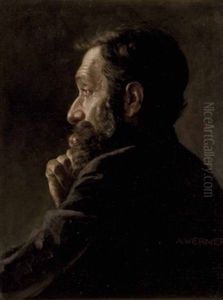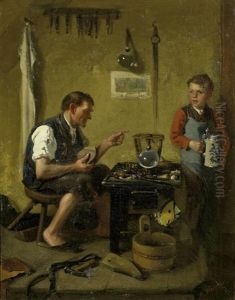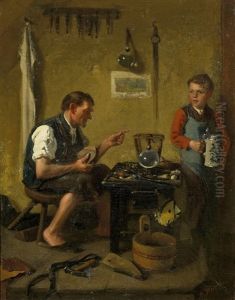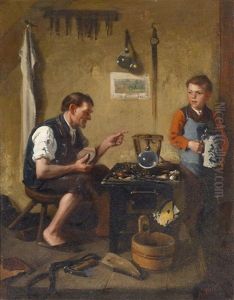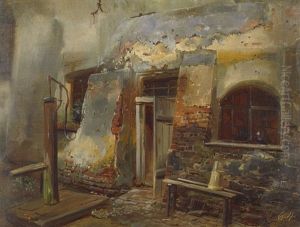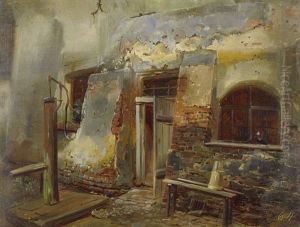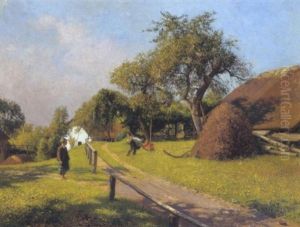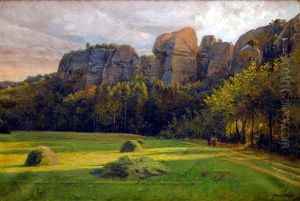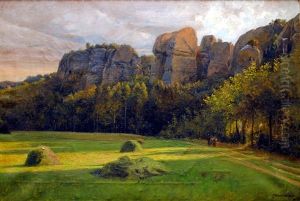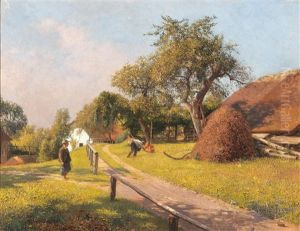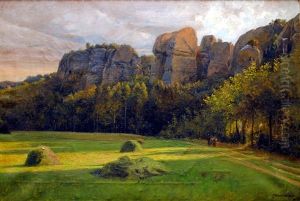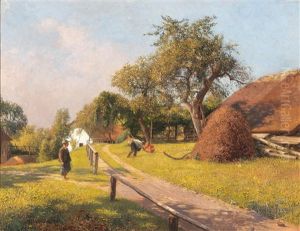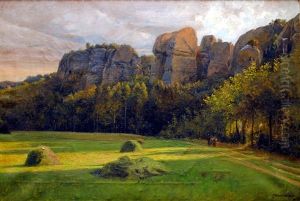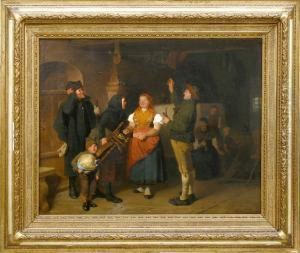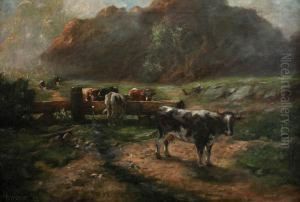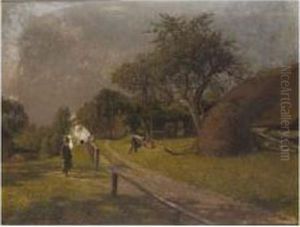Adolf Werner Paintings
Adolf Theodor Werner was a German genre painter, known for his depictions of everyday life scenes, often with a humorous or satirical twist. Born on October 2, 1827, in Frankfurt (Oder), Prussia (now in Germany), Werner developed an interest in art at an early age. Despite the lack of detailed records about his early life and training, it is known that he pursued his artistic education at the Prussian Academy of Arts in Berlin, where he likely honed his skills and developed his unique style.
Werner's work was characterized by its fine detail, vibrant color palette, and the ability to capture the nuances of social interactions. He often painted scenes from the lives of the bourgeoisie and peasantry, providing a window into the customs and daily life of 19th-century Germany. His paintings often included a moral or narrative element, inviting viewers to engage with the story he was telling through his art.
Throughout his career, Werner exhibited his work at various art shows and gained recognition for his contributions to the genre painting tradition. He became a part of the Berlin art scene, where he interacted with other artists and intellectuals of the time. However, unlike some of his contemporaries who traveled extensively for inspiration, Werner seemed to find ample subject matter in the world immediately around him.
Adolf Werner passed away on December 28, 1883, leaving behind a legacy as a respected genre painter. His works continue to be appreciated for their charm and historical value, offering insight into the society and culture of his era. While he may not be as widely known as some of his contemporaries, Werner's paintings remain a testament to his skill at capturing the essence of 19th-century German life.




